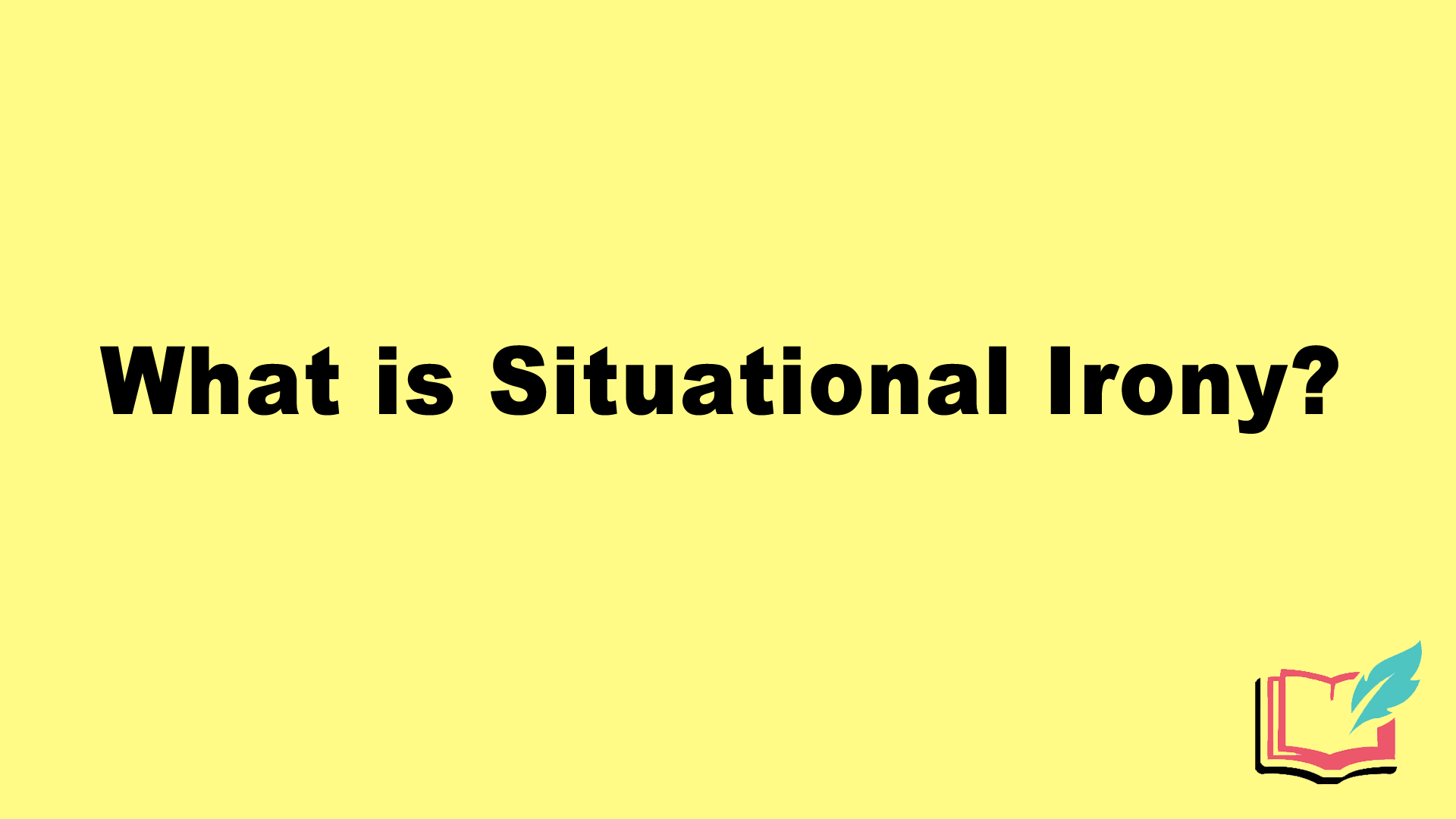
Situational irony is a literary device that creates a situation or outcome that is drastically different from what was expected to occur. Situational irony can also be referred to as irony of circumstance.
What is Situational Irony?
Situational irony occurs when audiences expect one thing to happen, and then something else happens altogether. Situational irony highlights contrasts and contradictions within a story which allows the audience to make distinctions between what seems to be true and what is actually true. This often highlights certain elements of a story’s theme as well.
Kate Chopin’s “Story of the Hour” is a short story that uses situational irony as a major plot device. The wife of a Mr. Brently discovers that her husband has died in a car accident. Rather than grieving, she begins to imagine the life that she will have free of restrictions.
At the end of the story, however, her husband comes home, and Mrs. Brently dies from shock when she sees him. Not only did she not get her life free of restrictions, she did not get any further time alive whatsoever.
Situational Irony vs. Dramatic and Verbal Irony
Dramatic irony is a device commonly found in plays, movies, etc., and occurs when the audience knows more about a situation than the characters do. Dramatic irony is a useful device that advances plot without giving away key information to all of the characters.
William Shakespeare’s Macbeth uses dramatic irony to show that Duncan does not know about the prophecy that Macbeth is going to kill him:
“There’s no art
To find the mind’s construction in the face:
He was a gentleman on whom I built
An absolute trust.”
Verbal irony is when a speaker says something other than what they truly mean. For example, when a character says something with underlying meaning that contrasts with the literal meaning of what was spoken. This device relies heavily on the audience’s intellectual abilities to understand the true meaning.
William Shakespeare’s Romeo and Juliet sees verbal irony as Juliet intends to confuse her mother:
- “I will not marry yet; and, when I do, I swear it shall be Romeo, whom you know I hate, rather than Paris.
Situational irony deals with inconsistencies in action rather than words. Consider, again, William Shakespeare’s Romeo and Juliet and how Romeo works tirelessly to create peace between specific characters and also the dueling families as a whole.
However, his actions ultimately lead to him being banished and then both his and Juliet’s deaths and nobody was ever actually able to reconcile and come together.
The Function of Situational Irony
Situational irony serves to emphasize certain scenes and interactions because they are important to broader aspects of the story such as theme and motifs. Strange and/or unusual events or concepts are elevated in a way that creates unexpected turns in a story, usually at the end.
This type of irony ranges from comical to deeply tragic. In a comical story, situational irony will create and pivot which leads to some sort of improvements for the characters. Tragic situational irony, however, does not generally lead to happy endings for the characters involved with events such as psychological/bodily harm or even death occurring. Skillful combinations of comedic and tragic events can also be found in cases of situational irony.
Situational irony also functions to add variation and embellishments to a story that will stick in a reader’s mind and prompt deeper thinking. Coming across situational irony is a good time to consider theme, motif, key lessons, etc. of the overall story.
How Situational Irony is Used in Literature
In “The Gift of the Magi” by O. Henry, the wife cuts off her beautiful long hair and sells it so that she can buy her husband a pocket watch chain. At the same time, he is selling his watch so that he can buy her a beautiful decorative comb. Both receive useless gifts but their selfless love is highlighted in this case.
“Messy Room” by Shel Silverstein is a poem about a bedroom that is so messy, that the narrator does not even recognize it. The situational irony occurs when he realizes that he’s been talking about his own room the whole time:
Whosever room this is should be ashamed!
His underwear is hanging on the lamp.
His raincoat is there in the overstuffed chair,
And the chair is becoming quite mucky and damp.
His workbook is wedged in the window,
His sweater’s been thrown on the floor.
His scarf and one ski are beneath the TV,
And his pants have been carelessly hung on the door.
His books are all jammed in the closet,
His vest has been left in the hall.
A lizard named Ed is asleep in his bed,
And his smelly old sock has been stuck to the wall.
Whosever room this is should be ashamed!
Donald or Robert or Willie or–
Huh? You say it’s mine? Oh, dear,
I knew it looked familiar!
Recap: What is Situational Irony in Literature?
Situational irony is a useful tool to create plot twists and highlight important aspects of a story. It occurs when the action that takes place in a story is in stark contrast with what the audience expects.
In the Harry Potter series by J.K. Rowling, there are several instances of situational irony:
- Harry spent countless efforts attempting to kill Lord Voldemort, only to realize that he himself had to die at the hand of Voldemort in order for anyone to ever have a chance at destroying the evil figure.
- Neville Longbottom, who Lord Voldemort never considered as a threat despite the prophecy indicating that he could be, ends up killing the snake, a crucial step towards Voldemort being destroyed.
- Snape was not able to save Lily Potter, but he saved his own soul by agreeing to protect her son.
- Pity was the ultimate downfall of Peter Pettigrew, a selfish and cowardly character who never showed any signs of caring about others at all.
